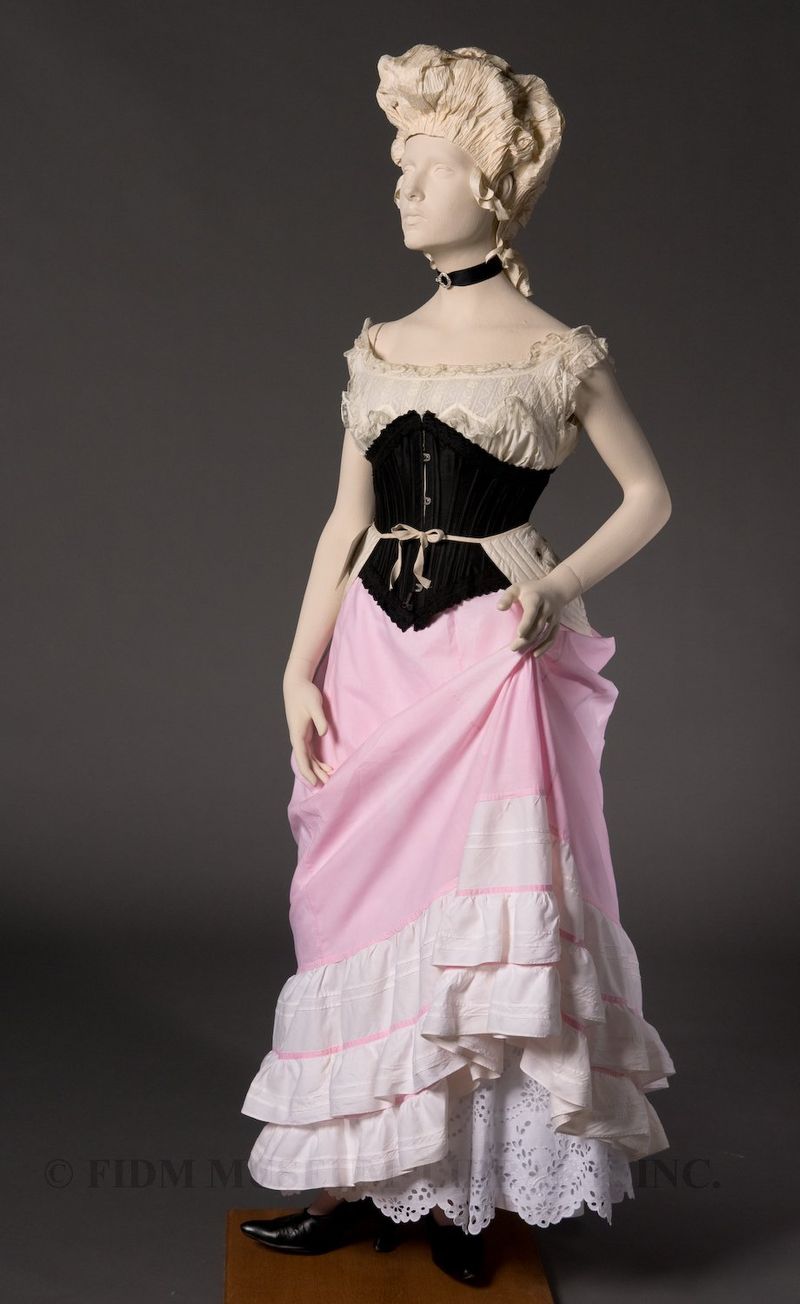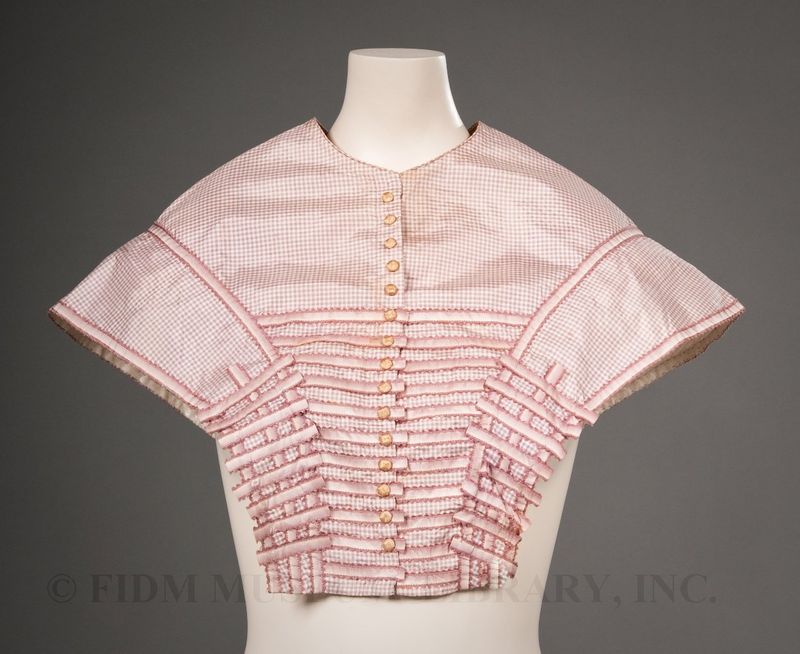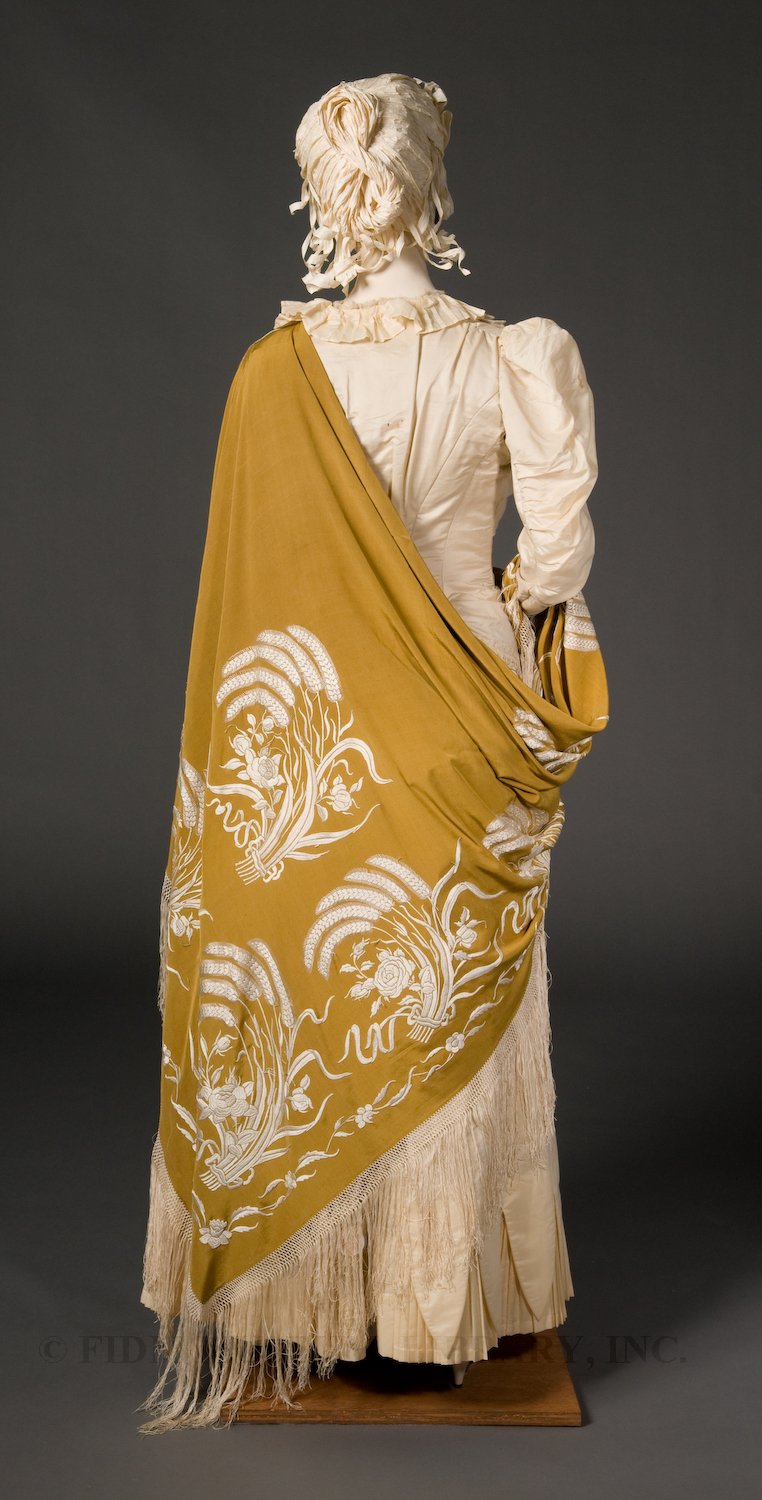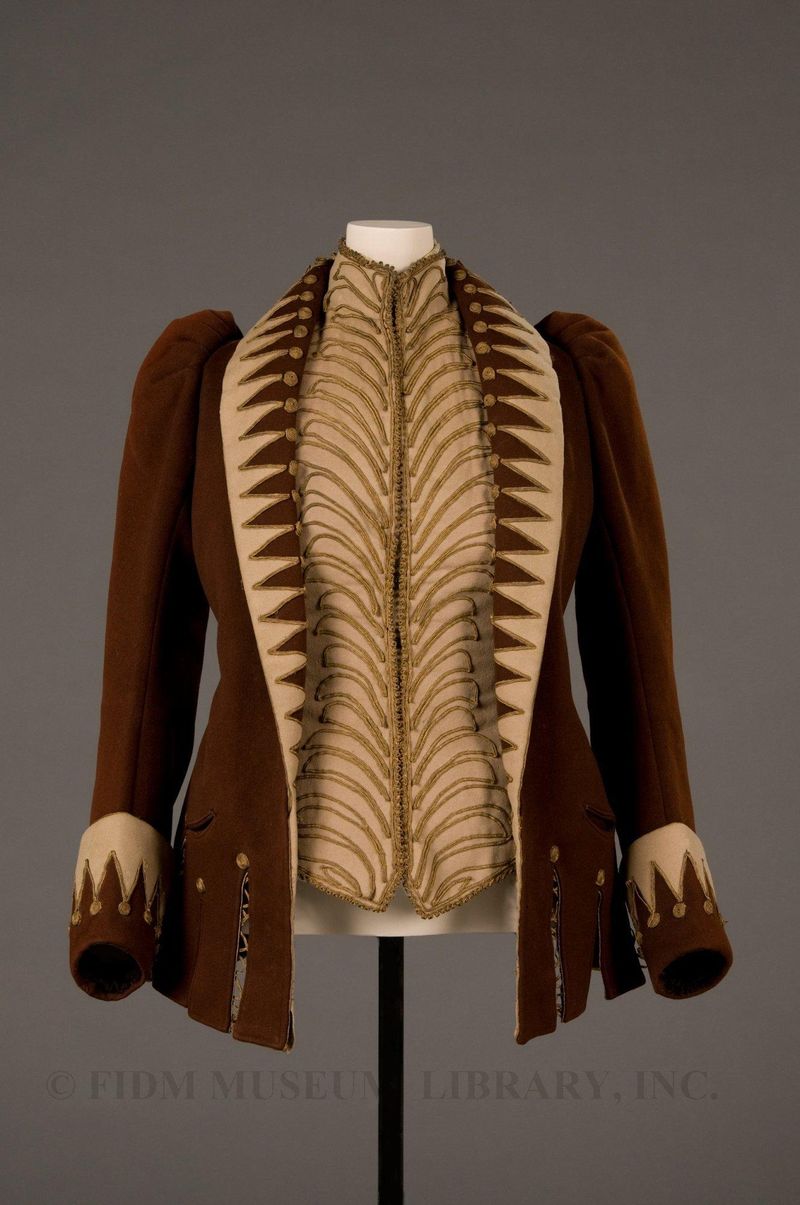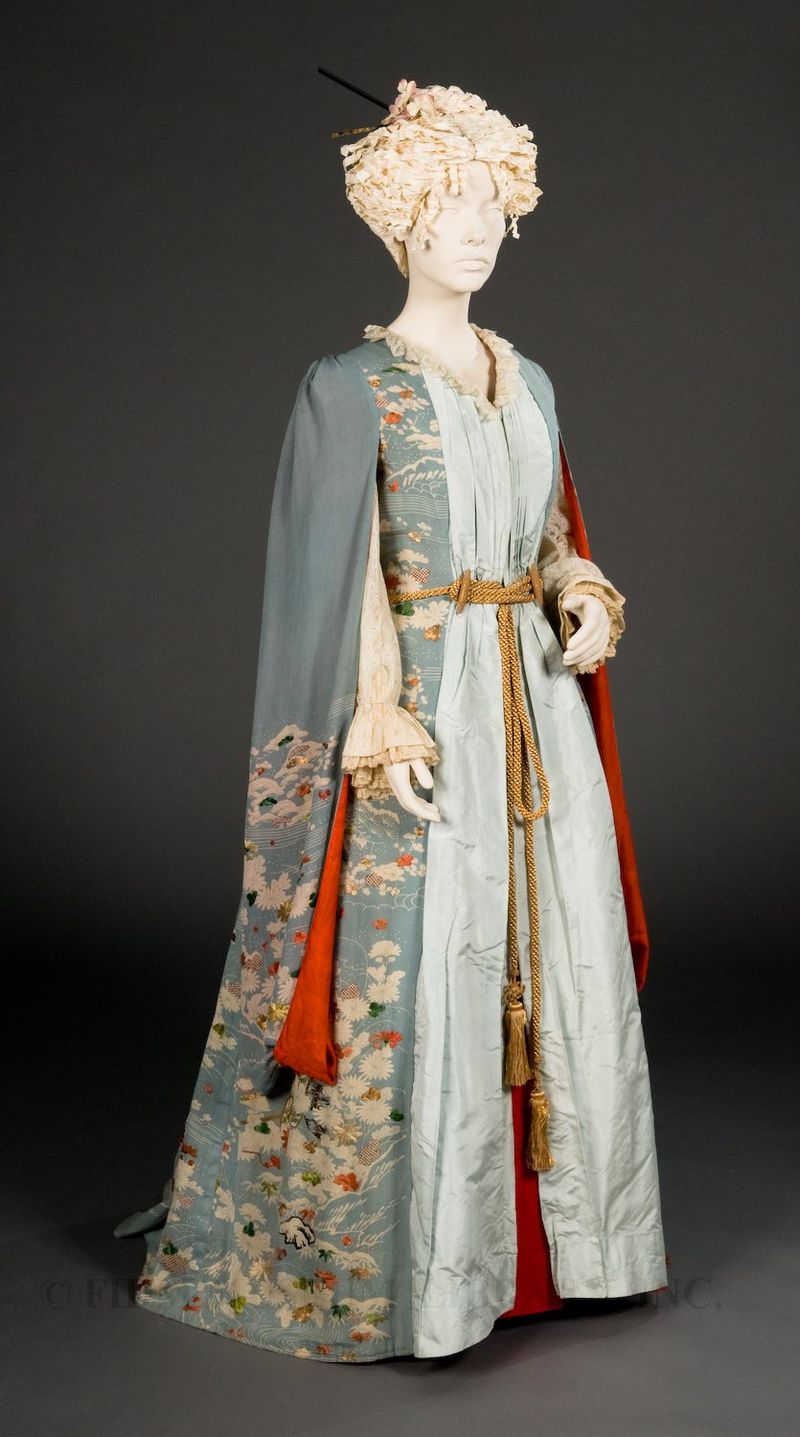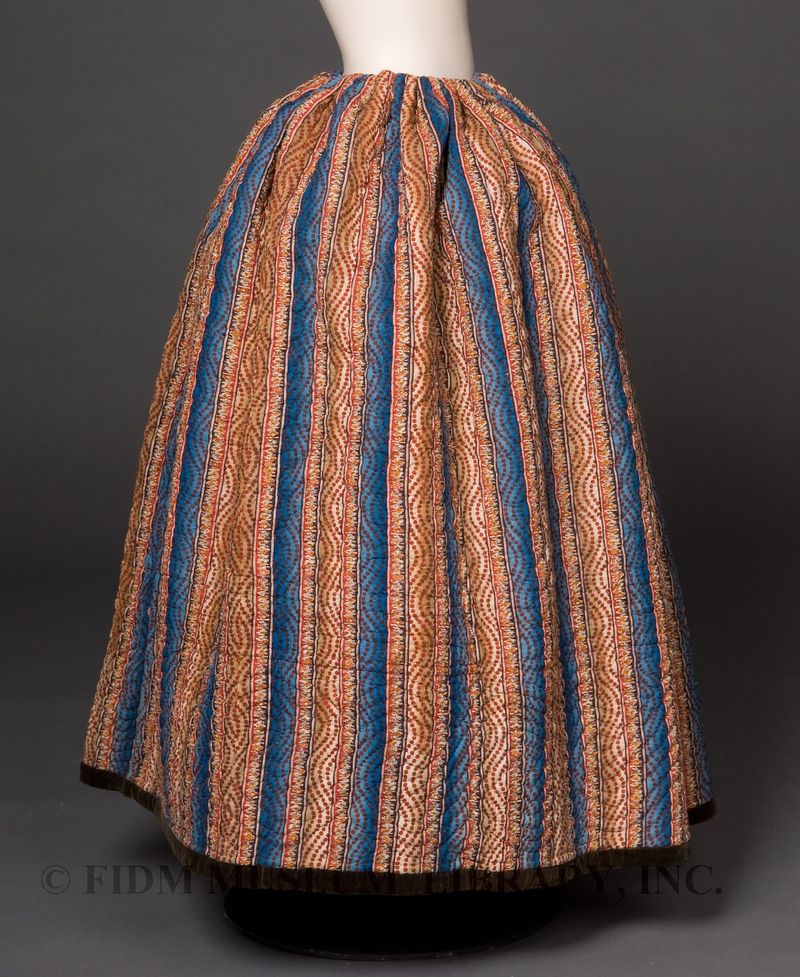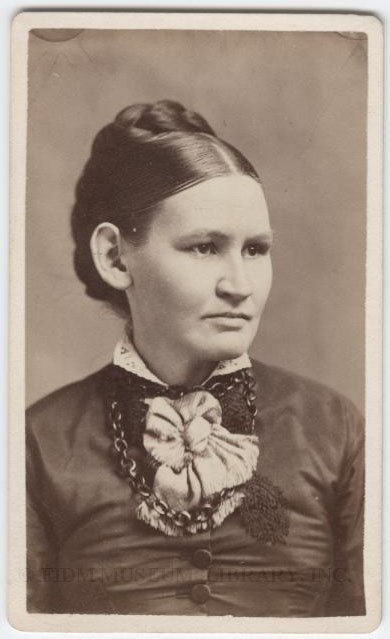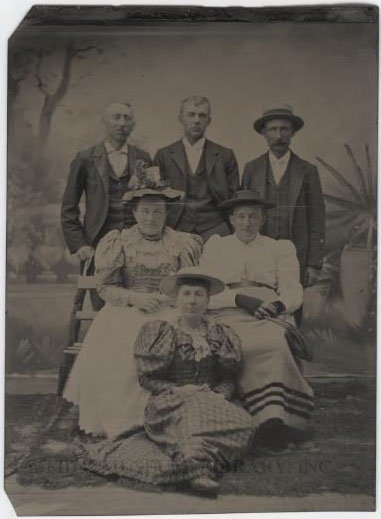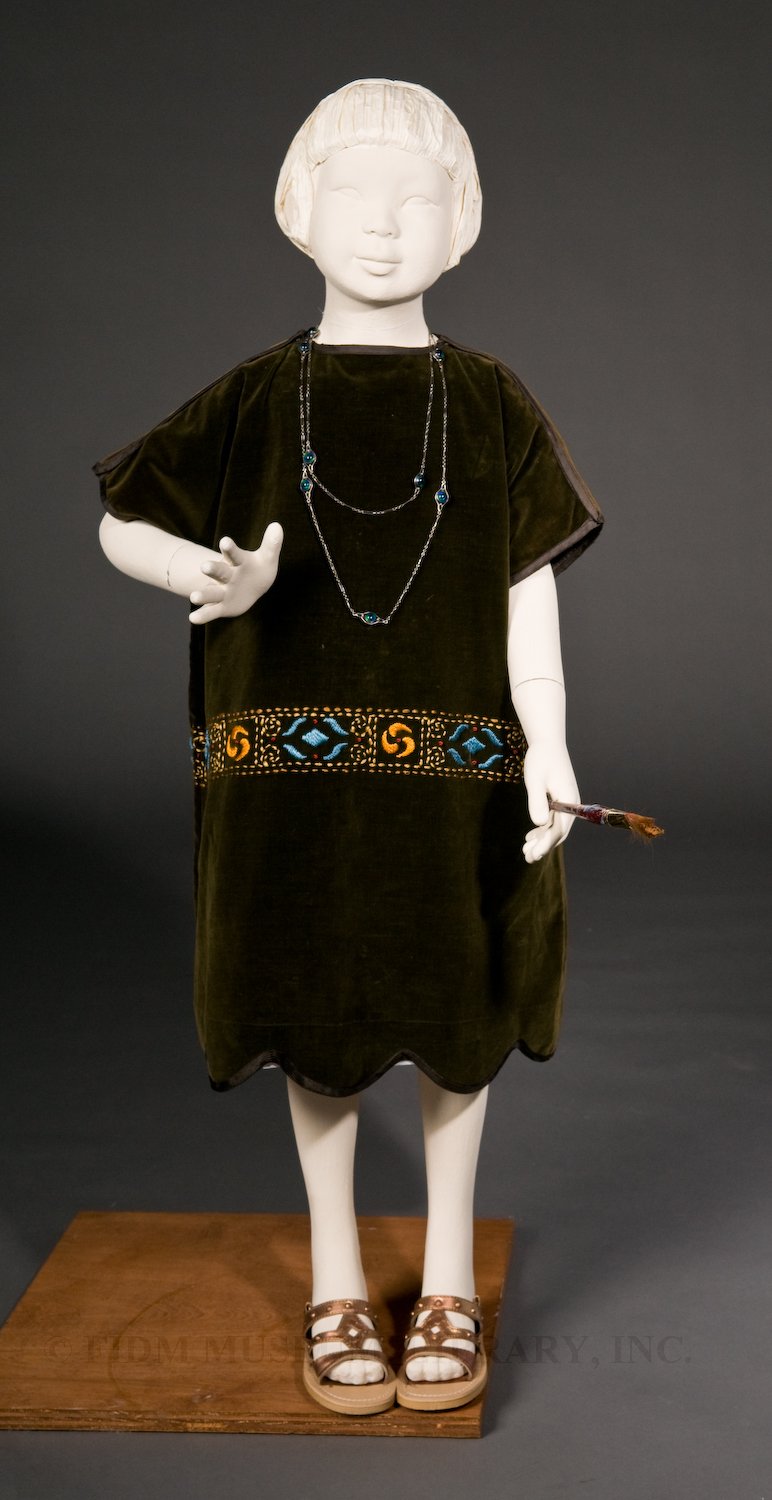This website uses cookies so that we can provide you with the best user experience possible. Cookie information is stored in your browser and performs functions such as recognising you when you return to our website and helping our team to understand which sections of the website you find most interesting and useful.
For much of the past 500 years, women have used underpinnings to mold their bodies into the dominant fashionable silhouette. The basic underpinnings usually consisted of a chemise, corset and petticoat(s). Other items, including sleeve plumpers, crinolines... Read Article ››
Pelerine
Pelerine1855-60 Gift of Steven Porterfield... Read Article ››
Wheat motif
Widespread cultural preoccupations or anxieties are often expressed through dress. This can be extremely overt, as in the case of a T-shirt slogan, or much more discreet, as in a frequently recurring decorative motif. In the 19th century, anxiety relating to... Read Article ››
Military influence
Military inspired fashion has been getting a lot of attention lately. March 2010 issues of Harper's Bazaar and Vogue (both American and British) feature fashion editorials focusing on garments in khaki and shades of olive, while a recent New York Times... Read Article ››
Refashion
As a concept, fashion is based on the appeal of the new. Every season, silhouettes, colors and shapes are re-combined in an effort to create garments of such great appeal that you will replace (or at least supplement) your existing wardrobe. With the... Read Article ››
Polonaise bodice
In 1872, fashion periodicals such as Godey's Lady's Book, Peterson's Magazine and Harper's Bazaar were filled with references to various styles of the polonaise dress. Whether a princess, vest, Russian or dolman polonaise, the common... Read Article ››
Smocked frock
Between the 1750s and the late 19th century, rural Englishmen wore voluminous smocks when working outdoors. Usually made of rough homespun, most smocks had long, full sleeves and ended at mid-calf. Though entirely functional, smocks often featured decorative... Read Article ››
Kimono dressing gown
Japanese styles are always attractive in negligees.-The Delineator, April 1903 Kimono dressing gownc. 1885Gift of Anonymous... Read Article ››
Quilted petticoat
Before the introduction of the cage crinoline in 1856, women typically wore multiple layers of petticoats. The petticoat layers (sometimes as many as 6!) not only shaped the skirt into a fashionable bell-shape, but also provided warmth. Between about... Read Article ››
Fashion history through photographs, part II
Part two of FIDM Museum Collections Manager Christina Johnson's examination of how photographs can be used to study fashion history. Carte de visitec. 1875-77Gift of Steven Porterfield2009.897.103Carte de visites were produced from 1854 through the 1880s.... Read Article ››
Fashion history through photographs, part I
Today's post was written by Christina Johnson, FIDM Museum Collections Manager. Part II will be posted on Wednesday, December 9. Enjoy! Tintypec.1895-1897Gift of Stephen Porterfield2009.897.74 Photographic portraits are valuable resources for... Read Article ››
Bohemian dress for children
Bohemians were figures of both fascination and fun in the late 19th and early 20th centuries. A typical Bohemian was often artistically or politically inclined and was willing to step outside the bounds of conventional society. The highest Bohemian ideal was... Read Article ››

